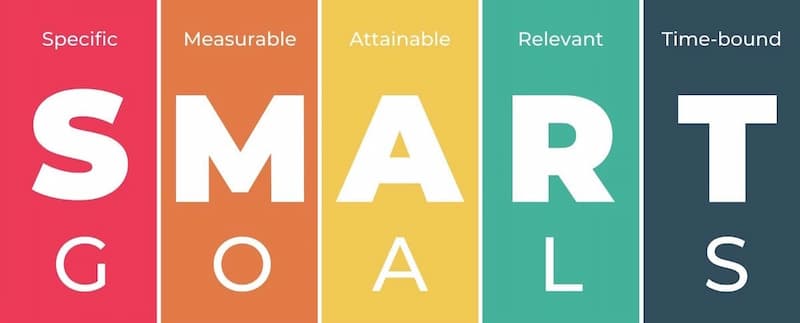
13 November, 2024
How to Measure the ROI of Your Promotional Pen Campaign
So, you've decided to dive into the world of promotional pens, huh? Smart move! Whether you’re a small business owner, a marketing guru, or just someone trying to get the word out about a cool project, pens are a classic choice. They're practical, affordable, and hey, who doesn't need one?
But here’s the million-dollar question: Are they actually worth the investment? How do you measure the return on investment (ROI) for your promotional pen campaign? Should I be looking at cheap custom plastic pens or more luxury-style metal pens? Let’s break it down into some easy, actionable steps.
Step 1: Set Clear Goals
Think of your promotional pen campaign like a road trip. You wouldn’t just start driving without knowing your destination, right? The same goes for your campaign. Setting clear, specific goals is your roadmap to success. It helps you focus your efforts and resources in the right direction.
Types of Goals You Might Consider
Increasing Brand Awareness: This is all about getting your name out there. Maybe you're a new business or launching a new product. Your goal could be as simple as having a certain number of people recognise your brand. You might measure this through social media mentions, surveying customers, or tracking website traffic after distributing your pens.
Boosting Sales: If you’re looking to see a direct impact on your bottom line, setting a sales-related goal is key. This could mean tracking how many customers make a purchase after receiving a pen, or setting a target percentage increase in sales.
Generating Leads: Perfect for trade shows or networking events. Your goal might be to collect contact information from potential clients. You can track how many leads you gather at an event where you distributed pens, or how many new sign-ups you get on your website.
Enhancing Customer Loyalty: Sometimes, the goal is to keep your existing customers coming back. For this, you might track repeat purchases or increases in customer engagement on social media or other platforms.
Educational or Informative Campaigns: Maybe your goal is to educate people about a new initiative or product feature. Here, your success metric could be based on how well this information is disseminated and understood.

Setting S.M.A.R.T. Goals
Once you’ve identified the type of goal you’re aiming for, make sure your goal is S.M.A.R.T.:
Specific: Be as detailed as possible. Instead of saying, “I want to increase sales,” say, “I want to increase sales by 15% in the next quarter.”
Measurable: Ensure that you can track your progress. How will you measure your goal’s success?
Achievable: Your goal should be challenging but possible. Setting unrealistic goals can be demotivating.
Relevant: Your goal should align with your broader business objectives.
Time-Bound: Set a deadline. This creates a sense of urgency and helps in planning.
Setting clear goals is the first critical step for measuring ROI. It not only gives you a clear direction but also makes the subsequent steps of planning, execution, and measurement much more focused and effective. Remember, a goal without a plan is just a wish. So set those goals.
Step 2: Track Distribution
Tracking distribution is like keeping a diary of your campaign's journey. It gives you a clear picture of where your pens are going, who's getting them, and how fast they're moving. This insight is invaluable for several reasons:
Budget Management: Knowing how many you've distributed helps you keep an eye on costs and manage your inventory effectively.
Target Audience Reach: It ensures your pens are reaching the right people, in the right places.
Campaign Adjustment: By tracking distribution, you can quickly adapt your strategy if you find certain methods or locations are more effective.

Effective Ways to Track Distribution
Record Keeping: Maintain a simple spreadsheet or database. Record every batch of pens you distribute, noting the quantity, date, location, and event (if applicable).
Inventory Management Software: If you're dealing with large numbers, consider using inventory management software. It can help you track distribution in real-time and prevent overstocking or understocking.
Event-Specific Tracking: At events like trade shows, keep a tally of how many you give out. You can use a clicker counter or a sign-in sheet where visitors note their interest in receiving your promotional material.
Direct Mail Campaigns: Keep track of how many pens are sent out in mailers. Cross-reference this with responses or inquiries received to measure effectiveness.
Collaboration with Distributors: If you're using third parties to distribute them (like stores or partners), regularly check in with them for updates on how many pens they've given out.
Use Unique Identifiers: For a more advanced approach, use serial numbers or QR codes on them. This not only helps in tracking but can also be a great way to engage customers.
Assessing Distribution Data
Once you have your distribution data, assess it periodically. Ask questions like:
- Are the pens being distributed as planned?
- Which locations or events yield the highest distribution?
- Is there a correlation between distribution and an uptick in website visits, sales, or inquiries?
Adjusting Your Strategy
Based on your findings, you might need to adjust your strategy. Maybe you need to shift focus to more productive locations, or perhaps certain events are not as fruitful as anticipated. Regular assessment and adjustment keep your campaign agile and effective.
Tracking the distribution is not just about counting numbers. It’s about understanding the dynamics of your campaign, making informed decisions, and maximising the impact of your investment.

Step 3: Keep an Eye on Costs
Keeping an eye on costs is a crucial aspect of any campaign. It's not just about how much you spend, but understanding where every penny goes. Let's break this down into a more detailed approach.
Understanding the Full Spectrum of Costs
Initial Purchase Costs: This is the base cost of the pens themselves. If you're ordering in bulk, understand the unit cost per piece. Prices can vary widely based on the quality and design of them.
Customisation and Branding: If yours have custom designs, logos, or messages, this will add to the cost. High-quality printing or engraving can be more expensive but offers a lasting impression.
Shipping and Handling: Don’t overlook the costs of getting them from the manufacturer to your doorstep. If you’re distributing them via mail, include the cost of postage and packaging materials.
Storage Costs: If you’re ordering a large quantity, you might need to store them. Whether it's a room in your office or a rented storage space, this is a cost to consider.
Distribution Costs: If you’re handing them out at events, factor in the costs of attending or hosting these events. If you use staff or third-party services for distribution, include their fees as well.
Additional Promotional Materials: Sometimes, they are part of a larger promotional package, which might include brochures, stickers, or other items. Be sure to account for these.
Why Cost Tracking is Essential
Budget Management: It helps you stay within your budget and make informed financial decisions.
ROI Calculation: You can only calculate your campaign's ROI accurately if you know the total investment.
Cost-Effective Decision Making: Understanding where costs are highest can help you find ways to reduce expenses in future campaigns.
Tips for Effective Cost Management
Negotiate with Suppliers: Don’t hesitate to negotiate for bulk orders or repeat business.
Optimise Shipping: Look for the most cost-effective shipping options, and consider ordering well in advance to avoid rush charges.
Track Expenses Regularly: Use a spreadsheet or financial software to keep track of all expenses as they occur.
Review and Adjust: Periodically review your spending. If certain costs are higher than expected, adjust your strategy accordingly.
Plan for Contingencies: Set aside a portion of your budget for unexpected expenses.
Keeping an eye on costs is not just about reducing expenses; it’s about maximising value. Every dollar you spend should contribute to achieving your campaign goals. Regularly reviewing and managing these costs ensures that your campaign remains a financially sound marketing strategy. Remember, the goal is to make your promotional pens not just a cost, but an investment with tangible returns.

Step 4: Monitor Pen-Related Interactions
This step is indeed a bit trickier, but it’s where the magic happens – seeing how your pens are translating into real engagement!
Pen-related interactions are any engagements or responses that occur as a result of your campaign. This can range from a potential customer visiting your website after receiving one to a lead generated at a trade show. The key here is to establish a direct link between these interactions and your pens.
Methods for Monitoring Interactions
Custom URLs and QR Codes: A super effective way to track interactions. Print a custom URL or a QR code on them that leads to a specific landing page on your website. This way, you can track visits directly attributed to the pens.
Surveys and Feedback Forms: Include a question in your feedback forms or surveys asking how the customer heard about you. If "promotional pen" is an option, you'll have direct feedback linking it to the interaction.
CRM Integration: If you use a Customer Relationship Management (CRM) system, you can track interactions by tagging them as “pen-related”. Whenever a customer mentions the pen, or if a QR code from it is used, tag that interaction accordingly.
Promotional Offers: Include a special offer or discount code with them that customers can use on their next purchase. This not only encourages sales but also helps you track which sales are directly related to the pens.
Social Media Tracking: Encourage recipients to engage with your brand on social media, maybe by posting a picture with the pen. Use specific hashtags to easily track these interactions.
Why Monitoring Interactions is Important
Measuring Effectiveness: It helps you understand how effective your pens are in engaging your audience.
Refining Strategy: By knowing what works and what doesn’t, you can adjust your future campaigns for better results.
ROI Calculation: This step is crucial for calculating the return on investment of your campaign.
Tips for Effective Interaction Monitoring
Make Interaction Easy: The simpler it is for someone to engage with your brand through the pen, the more likely they will do it. QR codes and easy-to-remember URLs work great.
Communicate the Action You Want: Clearly indicate on it what you want the recipient to do, whether it’s visiting a website or posting on social media.
Regularly Review Data: Regular analysis of the data collected will give you insights into how your campaign is performing and what adjustments may be needed.
Incentivise Engagement: Sometimes, a small incentive can significantly boost interaction rates.
Monitoring may require a bit of creativity and technological integration, but it's a critical step in understanding the impact of your campaign. Remember, each interaction is an opportunity to build a relationship with a potential customer. By effectively tracking these interactions, you turn simple pens into powerful tools for engagement and growth.

Step 5: Analyze and Calculate
Let's break down the process of calculating the Return on Investment (ROI). This step is crucial as it quantifies the effectiveness of your investment.
Understanding ROI Calculation
ROI is a measure of the profitability of your investment. It compares the gains you've made from your campaign to the costs you've incurred. The formula for calculating ROI is:

Breaking Down the Components
1. Gains from Investment
This is the total revenue or value generated from your campaign. It could include:
Direct Sales: Revenue generated from customers who used a promo code from your pen or mentioned the pen as their referral source.
Value of Leads: If your goal is lead generation, assign a monetary value to each lead. For instance, if 10% of leads typically convert to sales, and the average sale is $100, then each lead might be worth $10.
Increased Web Traffic: If you're tracking web visits via a QR code or custom URL on your pens, you can attribute a value to this increased traffic based on your typical conversion rates.
2. Cost of Investment
This includes all expenses related to your promotional pen campaign
Cost of Pens: The total amount spent on purchasing and customising them.
Distribution Costs: Any costs incurred in distributing them, including shipping, event fees, etc.
Additional Marketing Costs: Any other costs directly related to the campaign, like online ads to promote them.
Step-by-Step Calculation
Calculate Total Gains: Add up all the revenue and value generated from the campaign.
Calculate Total Costs: Add up all the costs associated with the campaign.
Apply the Formula: Plug these numbers into the ROI formula.
For example, if your campaign generated $5,000 in sales (gains) and cost you $1,000 (costs), your ROI would be:

This means you got a return of $4 for every $1 spent.
Tips for Accurate Calculations
Be Consistent in Measurement: Use the same currency and time frame for measuring costs and gains.
Consider Intangible Benefits: While hard to quantify, brand awareness and customer loyalty are also valuable gains.
Regular Review: Regularly calculate ROI to track the campaign’s progress and make adjustments as needed.
Calculating the ROI might seem a bit daunting at first, but it’s a powerful tool to assess the effectiveness of your marketing efforts. A positive ROI indicates a successful campaign, while a negative ROI signals a need for strategy adjustment. Remember, the goal is to make informed decisions to maximise the impact of your promotional activities.

Step 6: Learn and Adapt
By analyzing the outcomes of your campaign, you can uncover valuable lessons that can be applied to future efforts. This continuous process of learning and adapting is key to staying relevant and effective in your marketing endeavours.
Analyzing Campaign Outcomes
Review the Data: Look back at your ROI calculations, customer feedback, distribution data, and any other metrics you've tracked. What do these numbers tell you?
Identify Successes and Shortcomings: Recognise what worked well and what didn’t. Did certain designs or messages resonate more with your audience? Were there distribution channels that performed better than others?
Gather Feedback: Sometimes, the best insights come directly from your audience. Conduct surveys or informal discussions with customers who received your pens to get their perspective.
Adapting Your Strategy
Tweak the Design: If certain designs or messages were more popular, consider incorporating these elements more prominently in your next batch.
Redefine Your Audience: Maybe your pens were a hit with a demographic you didn't initially target. Use this insight to adjust your marketing focus.
Experiment with Distribution: If certain events, locations, or methods of distribution yielded better results, prioritise these in your next campaign. Conversely, rethink or drop channels that underperformed.
Adjust Marketing Messages: Align your messaging with the preferences and feedback of your audience. If they responded well to certain themes or calls to action, make these more central in your future marketing materials.
Implementing Changes
Set New Goals: Based on your learnings, set new, more informed goals for your next campaign.
Develop a Plan: Create a detailed plan of action that incorporates your new strategies, goals, and insights.
Monitor Progress: As you roll out your new campaign, keep an eye on the same metrics as before to see how your changes are impacting performance.
Embracing Continuous Improvement
Remember, marketing is not a one-and-done deal. It's a cycle of strategising, executing, reviewing, and improving. Each campaign is an opportunity to learn something new and make your next effort more successful.
The 'Learn and Adapt' step is about taking everything you've experienced and learned from your campaign and using it as a springboard for future success. By continuously adapting your strategies based on real-world feedback and results, you can keep your marketing efforts fresh, relevant, and effective.
The Final Numbers
Measuring the ROI might seem daunting, but it’s totally doable with a bit of planning and some number crunching. Remember, the goal is to learn and grow. And hey, even if the numbers aren’t what you hoped for, you’ve gained valuable insights – and that’s a win in my book!
So, go ahead and give it a try! And who knows? Your pens might just be the next big hit. Keep writing (with your promotional pens, of course!) and keep growing!
The Pens Only Team

